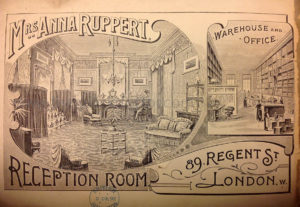Although Mr Lewis admits in this ad that the causes of sheep rot were imperfectly understood, he is on the right lines when he refers to “insects in the liver.”
The liver fluke, Fasciola hepatica L. was often noticed in sheep that had died of the rot, but there was a lot of controversy as to whether they were a cause of the disease, or a spontaneously generated symptom.
Back in 1749, Ellis, in his Shepherd’s Sure Guide, wrote of “plaise-worms” (so called from their resemblance to plaice), which, circulating with the blood, make their nest or lodgement in the fountain; that is to say, in the liver of the beast, where, if they cannot be killed, they will eat till they kill the sheep.
Well into the 19th century, however, new theories continued to be proposed, with many agriculturalists believing that some sort of humidity in the air was responsible for the rot. Because the early stages of the disease often caused animals to put on weight and temporarily appear to be in good condition, farmers who recognised the signs would send the sheep to market before they deteriorated, thus putting the diseased meat into the human food chain.
After a devastating outbreak in 1860, the Journal of the Royal Agricultural Society published an outstanding essay by James Beart Simmonds, Professor of Cattle Pathology at the Royal Veterinary College, which described the life cycle of the liver fluke and concluded that this was the cause of the rot.
Image: Sheep from the fourth edition of Meyers Konversationslexikon (1885-90)
To be had of TREWMAN and SON, EXETER.
To FARMERS, &c.
MR. LEWIS’S incomparable SHEEP-DRENCH.
An effectual and safe remedy, is, with confidence,
now offered to the public, as a preventive of those fatal
diseases incident to sheep, called the ROT and SCAB. The
true cause of these disorders is very imperfectly understood,
many have attributed it to moisture, others have ascribed it
to a certain principle of putrefaction, both in the air and the
grass, especially in May or June, if the year proves wet,
causing insects in the liver; it is sometimes occasioned by
obstructed and inspissated bile. Before these valuable
drenches were prepared, which never fail of a cure, a con-
siderable number of these useful animals were lost, but the
sheep so affected may now be preserved with so easy an ex-
pense as sixpence per drench. It has been found so bene-
ficial to the farmers in Kent and Berkshire, that it will be
adviseable that no gentleman who keeps a breeding stock,
should be without it, as it will if kept dry, be as good
at seven years’ end, as when first prepared.
It is sold, wholesale and retail, by Mr. Lewis, No. 9,
Bartholomew-yard, and retail by Mess. Trewman and Son,
in Exeter, in packets of one dozen each, at 6s. with direc-
tions for using, where bills or cash sent to the amount of
the order, will be duly attended to, and the orders for
warded to any part of England.
The under-mentioned gentlemen will attest the wonder-
ful benefit of the above drench; J. Write, and A. West,
esqrs. Walton; Mr. Row, Lee; Mr. D. Wilson, and Mr.
L. Jackson, Newbury; Mr. N. Cole, Marlow; with many
other respectable gentlemen, too numerous to insert.
Source: Trewman’s Exeter Flying Post, Thursday 29 June 1809




One thought on “Mr. Lewis's Incomparable Sheep-Drench”
Comments are closed.